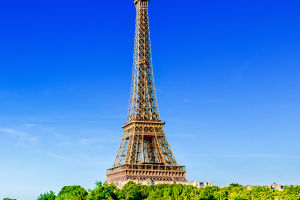Birds in the world have a variety of brilliant colours, so do you know which blue birds there are in the world? This article introduces five species of bluebirds that are sure to impress you with their charm.
1. Small Niltava
Small Niltava's forehead base, front of eyes, ear feathers, and eye rims are black. They have cobalt blue spots on the forehead, the brow area on the sides of the head, the loin, and the tail.
The surface of their neck, back, shoulders, wings, and tails are purple or dark blue from the head to the back of the neck and the wings and tail.
The large cover and flight feathers on their wings are brown or dark brown with narrow dark blue or purple-blue feather fringes. Their jaws, throat, and upper chest are black or dark purple-blue.
The upper body of the female is olive-brown, especially the rump and tail covering, and the wings are brown with brown edges. The middle pair of tail feathers are brown, the rest is brown or dark brown, the edge is brown, and there is a bright blue spot on the side of the neck.
2. Blue Whistling Thrush
Male and female Blue Whistling Thrush are similar in colour. Their foreheads and the undersides of the eyes are black, and the rest of the head and the entire upper and lower body plumage are dark purple-blue. Both wings are dark brown.
The outer shell of the wings is dark purple-blue with a dark brown inside. The small coverts on the wings are bright purple-blue.
Except for the Blue Whistling Thrush in Southwest Asia, which has no white ends, the Blue Whistling Thrush in other places has white or purple-white ends. Their flight feathers are also dark brown.
Except for the first primary flight feather, the appearance of other flight feathers is decorated with purple-blue. Their tails are dark brown on the inside and dark purple-blue on the outside, also dark purple-blue on the outside.
3. Bluebird
Bluebird is 15 cm long, with a wingspan of 21-24 cm, a weight of 17-25 grams, and a lifespan of about 15 years. This bird is easy to identify. They are blue from face to chest, which contrasts with their white underside.
The upper part of their wings and tail are royal blue. Beak conical with dark brown base. Black eyes, delicate legs, and paws, light brown. They inhabit mountainous and prairie regions of North America, where they nest in low scrub. They mainly feed on worms and insects, and sometimes fruit.
4. Common Kingfisher
The common kingfisher has a metallic light blue-green upper body, gorgeous and bright body hair, and fine dark and bright blue-green spots covering the top of the head.
Their ears and the back of their neck are white, the back of their body is grey and turquoise, and their shoulders and wings are dark green and blue with turquoise spots mixed in on the wings. Their throats are white and their chests are bright sorrel.
After entering the water, kingfishers can still maintain good eyesight, because their eyes can quickly adjust the perspective contrast caused by the light in the water, so they have strong fishing skills.
5. Great Blue Turaco
The Great Blue Turaco is about 75 centimetres long and weighs just over a kilogram. They are the largest birds in the banana cuckoo family.
There is a beautiful feather crown on the head, usually blue and black, and the feathers on it are neatly arranged. Their beaks are large and yellow with a red front.
The back of their body is blue, the abdomen is red or yellow, the wings are broad, the tail feathers are long, and the colour changes from dark blue to yellow. The blue banana azalea is widely distributed, especially in Africa.
They are often active on top of forests, feeding on a variety of forest fruits, including bananas.


